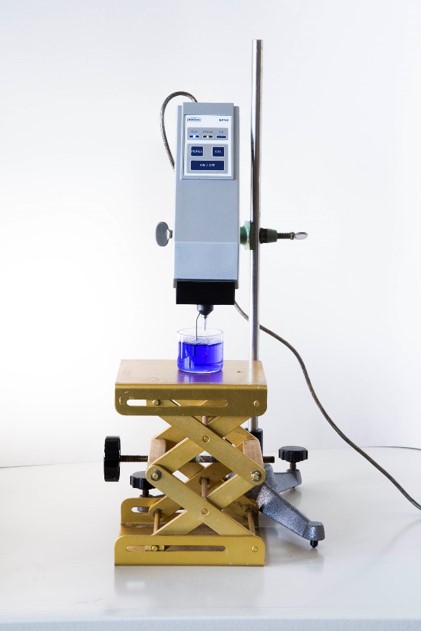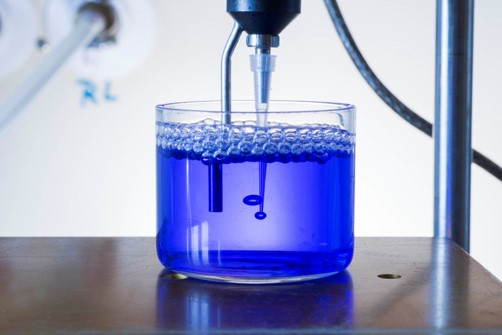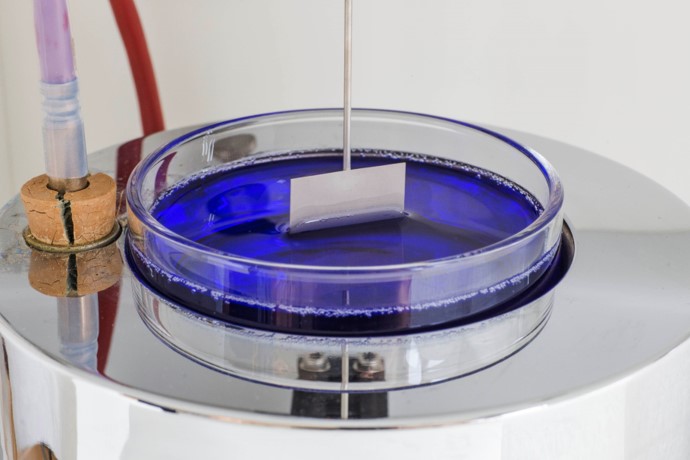Tensiometry
Bubble pressure tensiometry
Method for determining the dynamic surface tension of liquids
Principle
A measuring capillary is immersed in the solution to be tested and air (or another gas) is passed through it at a defined flow rate. The surface tension of the liquid is calculated via the gas pressure building up at the end of the capillary. As the frequency of bubble formation decreases, the duration of existence of the bubbles increases, corresponding to a higher surface age.
Requirements for Test Material
- Minimum liquid volume approx. 10 mL
- Liquids that do not foam too much
Bubble Pressure Tensiometer BP 50, Krüss
- Mobile tensiometer
- Measuring range of surface tension 15 mN/m to 100 mN/m
- Measuring range of liquid temperature 5 °C to 95 °C
- Bubble lifetime: 15 ms to 16000 ms
Applications
Investigation of dynamic processes of surface-active compounds.
Wilhelmy plate method/ring method
Method for measuring the surface and interfacial tension of liquids.
Principle
In the Wilhelmy plate method, the lower edge of a vertically suspended, rectangular platinum plate is brought into contact with the liquid to be measured and thus wetted. The surface tension of the liquid can be calculated from the force with which the plate is pulled out of the liquid.
In the De Noüy ring method, the ring, fully wetted with measuring liquid, is drawn through the liquid-liquid or liquid-gas interface. A liquid lamella constitutes on the ring, which enlarges the interface. The surface or interfacial energy can be calculated from the repulsive force.
Requirements for Test Material
- Viscosity not too high
- approx. 50 mL minimum quantity
- Interfacial tension > 10 mN/m
Measuring Equipment/Measuring Possibilities
- Measuring range 0 to 500 mN/m
- Measuring temperature approx. 0 °C to 100 °C
- Temperature/time dependence of surface tension
- Fully automatic determination of the critical micelle concentration (CMC)
- Measurement in tensile and compressive direction (for contact angle measurements)
- Contact angle measurements (areal) with different plate materials (also measurement with ring method)
- Density determination based on the buoyancy force of an immersed body up to 2.3 g/cm3
- Sorption determinations, e.g. on powders or membranes
- Sedimentation behavior of dispersions
Application Examples
- Surfactant concentration in glavanic baths
- Stability of emulsions
 Fraunhofer Institute for Interfacial Engineering and Biotechnology IGB
Fraunhofer Institute for Interfacial Engineering and Biotechnology IGB

